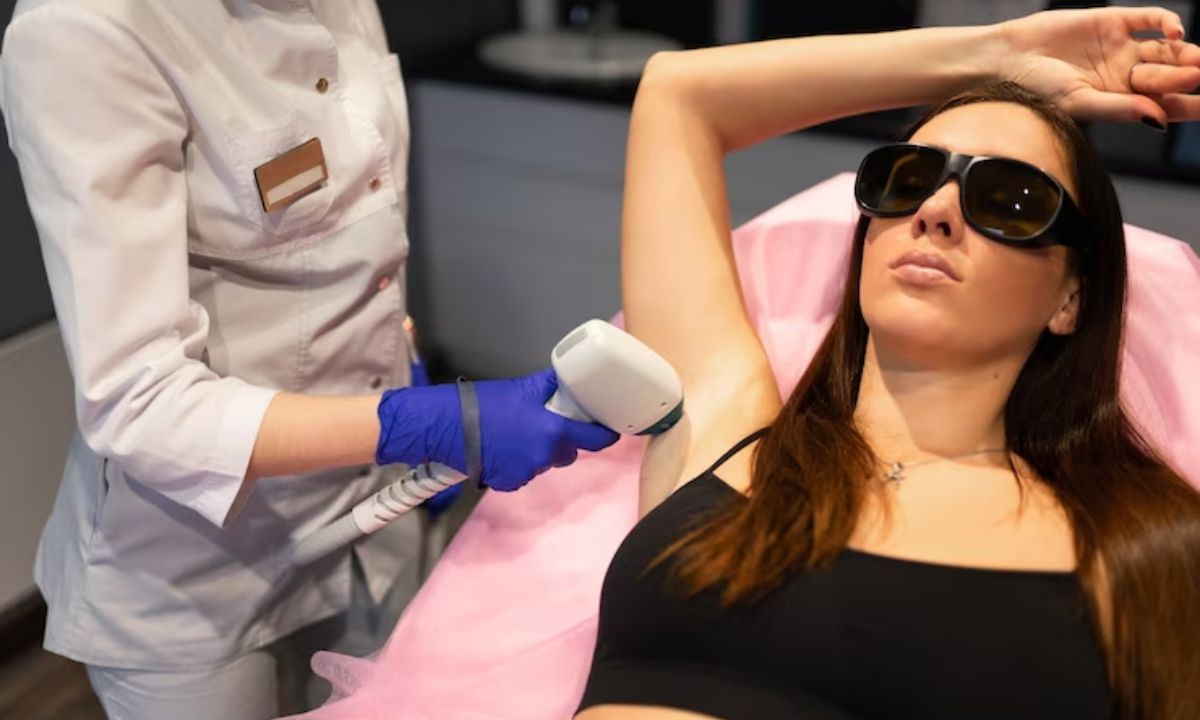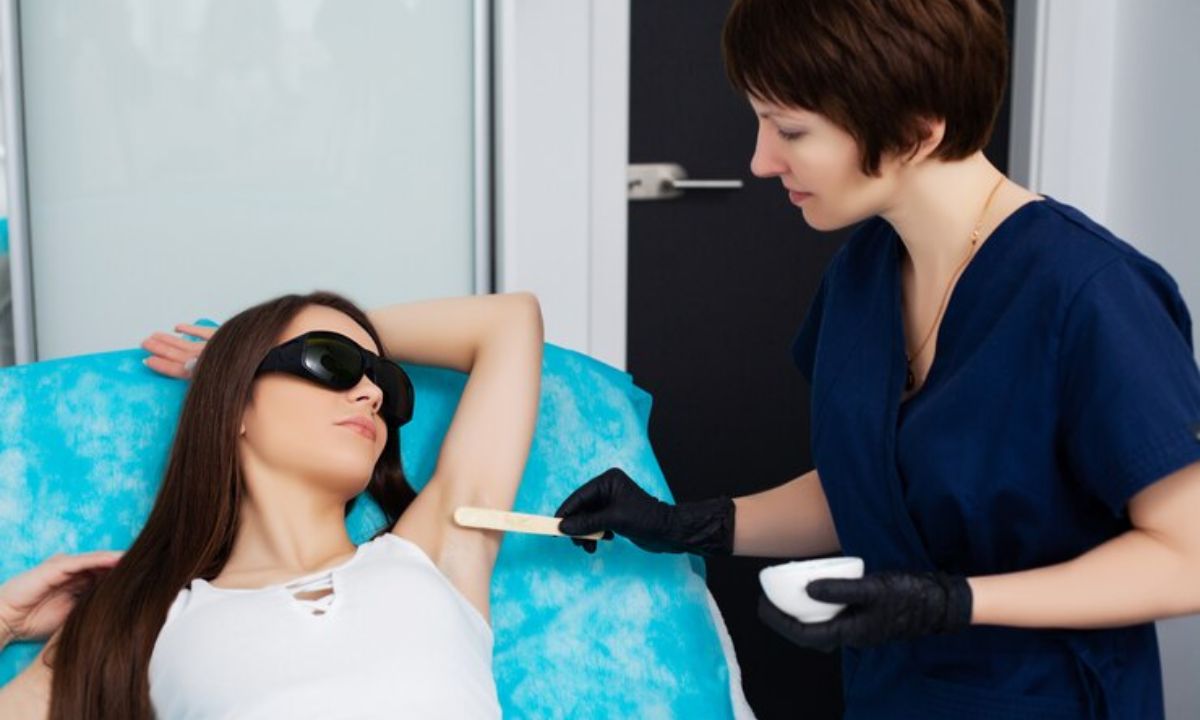As the sun sets on your laser hair removal journey, you may be eager to embrace a sun-kissed glow. However, the path to a flawless spray tan after laser hair removal is not without its twists and turns. In this article, we will explore the delicate dance between laser treatments and fake tan applications. Discover the science behind why immediate post-laser tanning is a no-go, and learn the optimal timing for achieving that coveted bronzed look. Join us as we unravel the mysteries of post-laser spray tans and unlock the secrets to a seamless beauty routine.
Key Takeaways
- Fake tan can interfere with the laser’s ability to accurately target hair follicles.
- Laser hair removal is safe and effective for darker skin tones.
- Waiting at least 48 hours after laser hair removal before applying fake tan allows the skin to heal and reduces the risk of side effects.
- Give the skin time to heal before applying self-tanning products after laser hair removal.
Why Does the Laser Cause a Reaction When Fake Tan Is Present
The presence of fake tan during laser hair removal treatments can cause a reaction due to the interaction between the laser and the chemicals in the tanning solution. Laser hair removal works by targeting the pigment in the hair follicles, heating them up, and damaging the hair growth cells. When a fake tan is applied to the skin, it creates an artificial layer of pigment that can interfere with the laser’s ability to accurately target the hair follicles. This can lead to ineffective treatment and potentially cause skin damage.
The chemicals in the fake tan solution can react with the laser energy, resulting in adverse effects such as burns or discoloration. Therefore, it is crucial to avoid fake tan before laser hair removal to ensure safe and effective treatment.
Laser Is Extremely Safe for People With Naturally Darker Skin, Here’s Why
Why is laser hair removal extremely safe for people with naturally darker skin?
- Laser technology has advanced significantly, making it safer and more effective for individuals with darker skin tones.
- The laser targets the pigment in the hair follicles, not the surrounding skin, reducing the risk of burns or discoloration.
- Modern lasers have adjustable settings that can be customized to accommodate different skin types, ensuring a safe and comfortable treatment.
- Skilled and experienced technicians are trained to understand the unique needs of darker skin, minimizing the risk of complications and maximizing the effectiveness of the treatment.
Laser hair removal for individuals with naturally darker skin can be a safe and successful option for achieving long-lasting hair reduction. With the advancements in technology and the expertise of professionals, individuals with darker skin tones can confidently undergo laser hair removal treatments without worrying about adverse effects.
Why Can’t You Use Fake Tan Directly After Laser Hair Removal
After laser hair removal, it is important to avoid using fake tan directly on the treated area. Laser hair removal works by targeting the pigment in the hair follicles, and the heat generated by the laser can cause temporary inflammation and sensitivity in the skin. Applying fake tan immediately after the procedure can further irritate the skin and potentially lead to adverse reactions.
The chemicals and ingredients in fake tan products can be harsh and may cause stinging, burning, or even allergic reactions on the treated skin. It is recommended to wait at least 48 hours after laser hair removal before using a fake tan to allow the skin to fully heal and reduce the risk of any unwanted side effects. It is always best to consult with your laser technician or dermatologist for specific post-treatment instructions to ensure the safety and effectiveness of the procedure.
How Long After Your Laser Session Do You Have to Wait Before Applying Fake Tan
To ensure optimal results and minimize potential skin irritation, it is advisable to wait a minimum of 24 hours but preferably 48 hours after your laser session before applying fake tan. This waiting period allows your skin to recover and reduces the risk of any adverse reactions. Here are some reasons why you should wait before applying fake tan after laser hair removal:
- Laser hair removal can cause temporary redness and sensitivity in the treated area. Waiting allows your skin to calm down and reduces the likelihood of irritation from the fake tan.
- Applying fake tan immediately after laser hair removal may interfere with the healing process of the skin, potentially leading to complications.
- Waiting also gives your skin enough time to exfoliate naturally, which helps the fake tan to adhere better and last longer.
- It is important to follow the aftercare instructions provided by your laser technician to ensure the best possible results and avoid any potential complications.
Now that we have discussed how long to wait before applying a fake tan, let’s explore the question of whether you can self-tan after laser hair removal.
Can I Self-Tan After Laser Hair Removal
Applying a self-tan after laser hair removal is a common concern for individuals seeking both treatments. After laser hair removal, it is important to give your skin time to heal and recover. The laser treatment can leave your skin sensitive and prone to irritation, so it is generally recommended to wait for a few days before applying any self-tanning products.
This allows your skin to fully recover and reduces the risk of any adverse reactions. It is also important to note that laser treatment can sometimes cause temporary changes in skin pigmentation, making it difficult to achieve an even and natural-looking tan. However, once your skin has fully healed, you can safely proceed with self-tanning. Now, let’s explore the science of sunless tanning.
The Science of Sunless Tanning
The process of achieving a sunless tan involves the application of a chemical compound that reacts with the proteins in the outermost layer of the skin. This reaction results in a temporary darkening of the skin, mimicking the appearance of a natural tan. Here are four key points to understand about the science behind sunless tanning:
- Dihydroxyacetone (DHA): The main active ingredient in sunless tanning products, DHA is a colorless sugar that interacts with the amino acids in the skin’s proteins to produce a brown pigment called melanoidins.
- Maillard Reaction: The chemical reaction between DHA and the skin’s proteins is known as the Maillard reaction. It occurs when DHA molecules combine with amino acids to form melanoidins, which darken the skin.
- Duration: Sunless tans typically last around 5 to 7 days as the outermost layer of the skin naturally sheds and regenerates. Regular exfoliation can help maintain an even tan.
- Safety: Sunless tanning is considered a safer alternative to sunbathing or using tanning beds, as it does not expose the skin to harmful UV radiation. However, it is important to carefully follow product instructions and avoid contact with the eyes and mucous membranes.
The Science of Laser Hair Treatments
Laser hair treatments utilize concentrated beams of light and heat to target and destroy the hair follicles, resulting in long-term or permanent hair reduction. The process involves directing the laser energy to the targeted area, where the pigment in the hair follicles absorbs the light and converts it into heat. This heat damages the follicles, inhibiting their ability to produce new hair. The success of laser hair treatments depends on factors such as the color and thickness of the hair, as well as the individual’s skin type.
Multiple sessions are usually required to achieve the desired results, as hair grows in different phases, and not all follicles are active at the same time. Overall, laser hair treatments offer an effective solution for reducing unwanted hair. However, there may be a better approach when it comes to combining these treatments with spray tans.
A Better Approach
To ensure optimal results and minimize potential risks, it is advisable to consider an alternative approach when combining spray tans with laser hair removal. While it may seem convenient to have both treatments done back-to-back, it is important to understand the potential complications that can arise. Here are some alternative options to consider:
- Wait for at least two weeks after laser hair removal before getting a spray tan. This allows the skin to fully recover and reduces the risk of irritation or adverse reactions.
- Opt for a self-tanning lotion or bronzer instead of a spray tan. These products can be applied at home and do not pose any risks to the treated skin.
- Consult with a professional aesthetician who specializes in both laser hair removal and spray tanning. They can provide guidance on the best approach and ensure that both treatments are done safely and effectively.
- Prioritize the health and well-being of your skin. If there are any concerns or uncertainties, it is always best to consult with a medical professional or dermatologist before proceeding.
FAQ’s
What Are the Potential Risks or Reactions When Combining Laser Hair Removal With Fake Tan?
When combining laser hair removal with fake tan, there is a potential risk of skin irritation, discoloration, or uneven results due to the sensitivity of the treated area. It is advisable to consult with a professional before attempting this combination.
Are There Any Specific Ingredients or Types of Fake Tan That Should Be Avoided After Laser Hair Removal?
Certain ingredients or types of fake tan should be avoided after laser hair removal to minimize potential risks or reactions. It is recommended to consult with a professional to determine the most suitable fake tan options post-treatment.
How Long After Laser Hair Removal Should I Wait Before Using Fake Tan Products?
It is recommended to wait at least 48 hours after laser hair removal before applying fake tan products. This allows the skin to fully heal and reduces the risk of any adverse reactions or complications.
Can I Apply Fake Tan to Areas That Have Recently Undergone Laser Hair Removal?
Applying fake tan to areas that have recently undergone laser hair removal is generally not recommended. It is best to wait until the skin has fully healed to avoid any potential irritation or adverse reactions.
Are There Any Specific Precautions or Steps I Should Take When Using Fake Tan After Laser Hair Removal?
When considering the use of fake tan after laser hair removal, it is important to take specific precautions. These may include waiting for the skin to fully heal, avoiding direct sunlight, and using a gentle, non-irritating tanning product.
Conclusion
In conclusion, it is recommended to wait at least two weeks after laser hair removal before getting a spray tan. The laser treatment can cause a reaction when fake tan is present, and it is important to give your skin enough time to heal. Additionally, self-tanning products can interfere with the effectiveness of the laser treatment, so it is best to avoid them before and after your sessions. By following these guidelines, you can ensure the best results from both your laser hair removal and spray tan treatments. Can you afford to compromise the effectiveness of your laser hair removal by rushing into a spray tan?











